Even a minor accident can become a serious issue in subzero temperatures, blowing snow, or a full-on snowstorm. Keeping a winter emergency kit in your car ensures you’ll have what you need if you’re stuck on the side of the road during the winter months.
Insurance.com executive editor Leslie Kasperowicz shows us what she’s packing this year in a winter car emergency kit to ensure her two teenage sons are prepared in case they become stranded during Minnesota’s long, cold winter months.
CarInsurance.com Insights
- A winter emergency kit provides essential items to stay warm and safe if you’re stranded on the side of the road during the winter months.
- Items like blankets, flashlights, water, and cold-weather gear, such as gloves and hats, should be included.
- Roadside assistance on your car insurance policy is an affordable way to get help if you’re stuck on the side of the road.
Driving on winter roads can be dangerous, and even a minor accident where a car slides off the road and gets stuck or simply breaks down can escalate to something far more serious if the car is stuck.
As the mom of two teen drivers and a resident of Minnesota, Insurance.com Executive Editor Leslie Kasperowicz understands the risks of winter driving and the importance of having emergency items in the car during the winter.
“There are some things you should keep in the car throughout the year, like jumper cables, but winter presents new and different risks. Being stuck on the side of the road during a Minnesota winter can be very dangerous.” Kasperowicz says.
Here’s a look at what she’s stashing in the car her teen boys drive (and in her own car) this winter.
Winter emergency kit essential items
All of these items are essential parts of the winter emergency kit in your car.
In addition to the items pictured, Kasperowicz keeps a heavy-duty snow brush, a portable battery jump starter and a bag of cat litter in each vehicle, which can provide traction in slippery conditions.
1. Blankets. You can certainly invest in thermal or emergency blankets, but any blanket will do. These can be used for warmth and to block the wind if a vehicle window is broken.
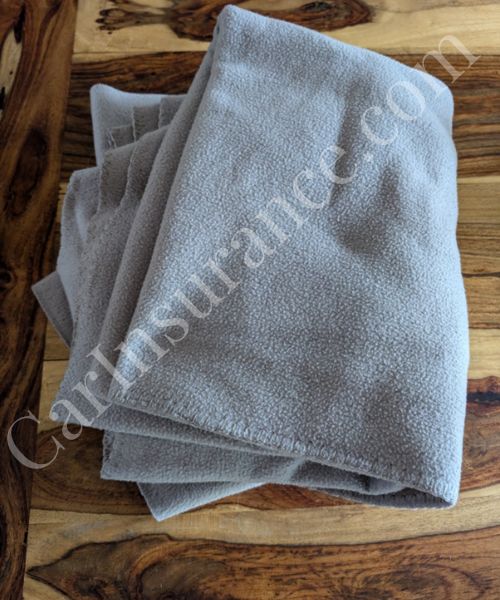
2. Extra gloves, hats and socks. “Teens often head out the door without the proper winter gear, so I keep it in the car for them in case it’s needed,” Kasperowicz says. “If you’re dealing with a roadside emergency, your hands and ears will get cold fast.”
Extra socks are a good addition in case snow gets into your boots and for added warmth.
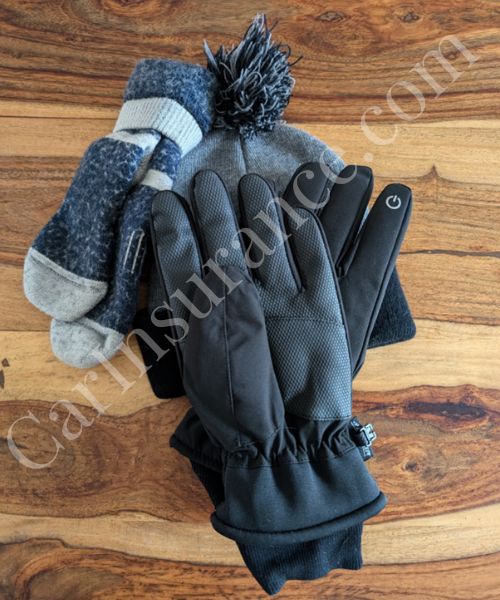
3. A first aid kit. A basic first aid kit is a must all year round, but Kasperowicz tucks it into the winter emergency bag so it’s easy to find.
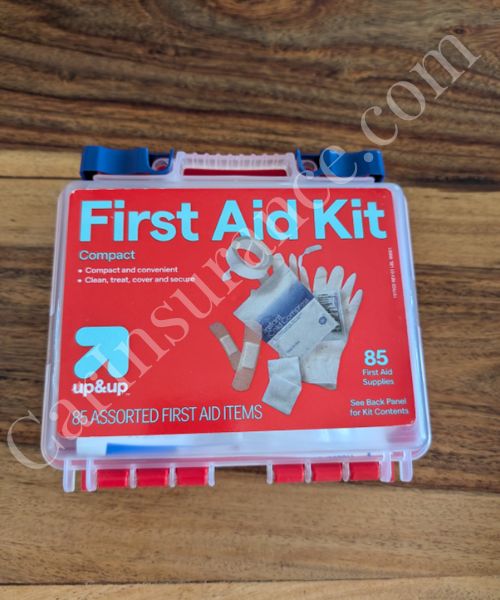
4. Water and high-calorie food. A couple of bottles of water and packable food like protein bars ensure sustenance if you’re stuck in the snow for long hours waiting for help.
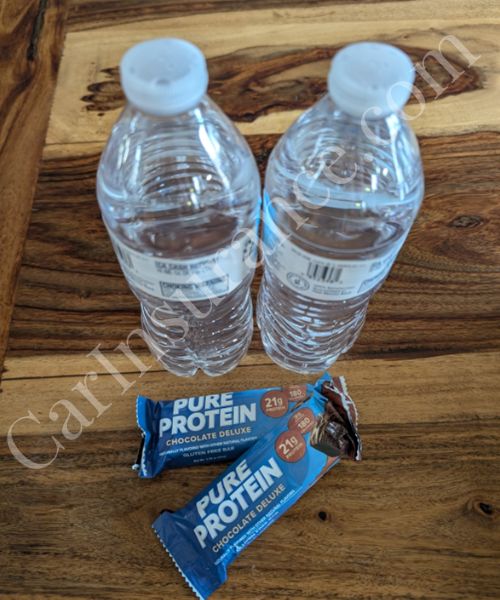
5. Hot Hands. These easy-to-use warmers come in various sizes and can be tucked into gloves and boots to keep extremities warm and avoid frostbite.
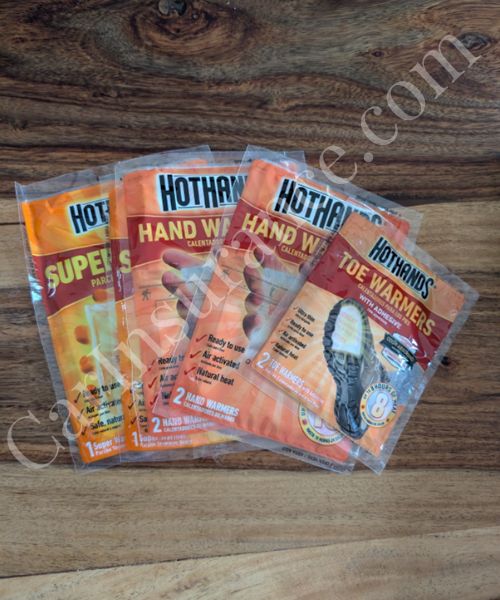
6. Flares. Kasperowicz packs LED battery-powered flares that can be used to warn other drivers of the presence of a car at the side of the road and also serve to notify emergency services of your location.
“A side-of-the-road breakdown can become a serious accident if other cars on the road don’t see you, and in winter weather visibility can be poor, increasing that risk,” Kasperowicz says.
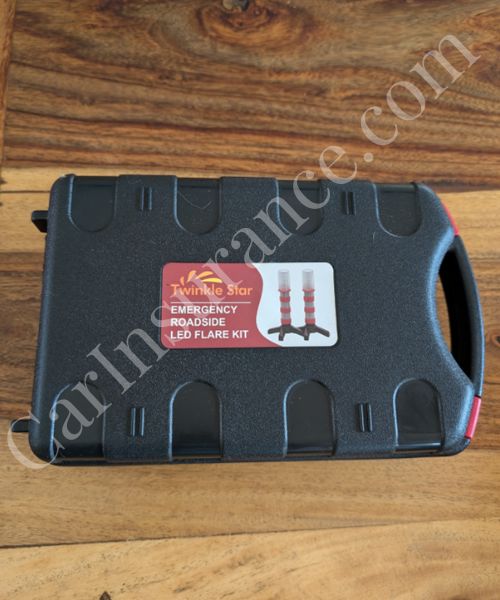
7. A flashlight. A flashlight is always a good thing to have in your car, but during the winter months dark comes earlier, particularly in northern states.
“Don’t forget to pack extra batteries,” Kasperowicz says.
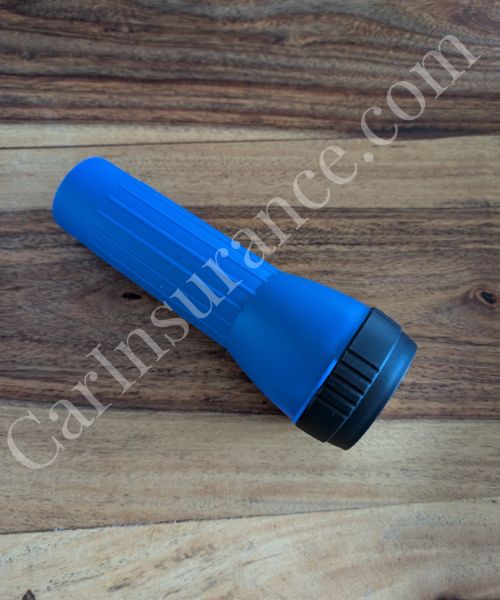
Explore your insurance options for winter weather auto accidents
Other ways to prepare for winter driving
A winter emergency kit is good to have, but it’s not the only thing you should do to prepare for winter roads. Here are a few other things Kasperowicz recommends.
- Winter tires. A good set of winter tires is worth the investment, and some insurance companies even offer a discount if you put winter tires on your car. Make sure they’re inflated to the manufacturer’s suggested level.
- Roadside assistance. If you don’t have AAA, sign up for roadside assistance on your car insurance policy. It’s cheap and ensures you can reach help if you need it. For a parent of a teen driver, it’s an extra layer of peace of mind.
- Emergency phone charger. The jumper box Kasperowicz keeps in the car doubles as a USB phone charger, but if you don’t have one, a battery phone charger is a good idea. Make sure you have the correct cables in the car.
- Chains. If you live in a mountainous area, keep chains in the car.
Read more on how to stay safe while driving in winter weather
Get advice from an experienced insurance professional. Our experts will help you navigate your insurance questions with clarity and confidence.
Browse all FAQs
